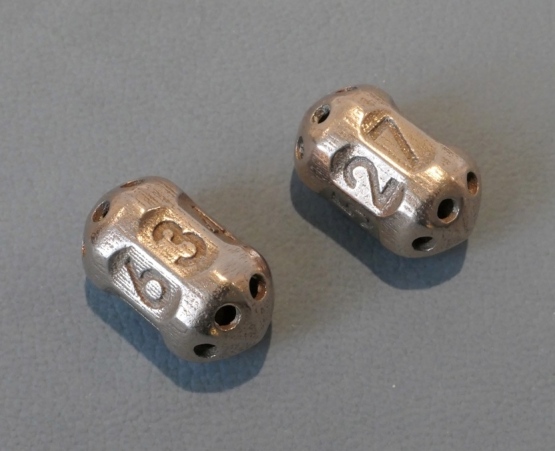
Smarter than the average dice, don’t you think? Just an inch long yet weighing a nicely solid 14 grams, these 7-sided polished bronze stainless steel dice from The Trinket Emporium have a pleasant feel in the hand and roll amazingly well. And while rolling them, one can marvel at the engineering that makes a 7-sided die possible.
A rolling die with a regular heptagonal cross-section has the geometric property that when it comes to rest on one of its faces, there is no opposite face pointing upwards. This problem is solved by inscribing an inverted heptagonal cross-section area between the end sections on which the die rolls. The result is aesthetically pleasing and practical to play with.
Careful thought has also been given to the order of the numbers, with the even numbers inserted between the odd numbers in reversed order: 1 6 3 4 5 2 7. Read the rest of this entry »





